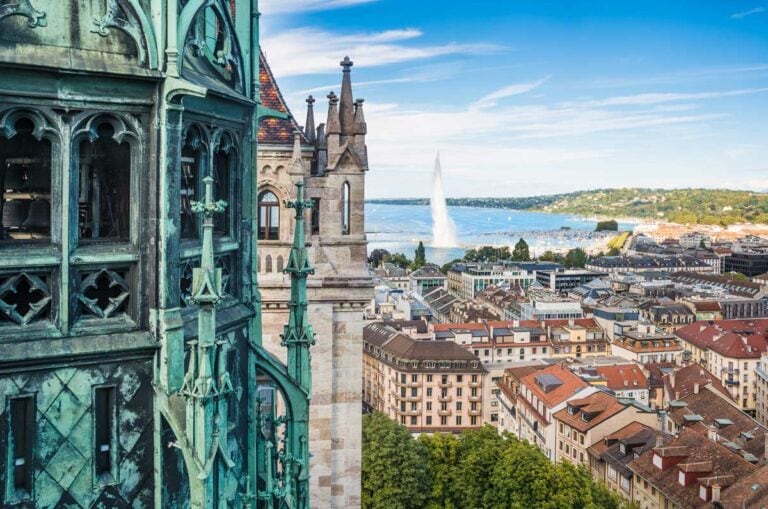
Go World Travel is reader-supported and may earn a commission from purchases made through links in this piece.
Think of Switzerland and your mind is aglow with images of enchantingly rolling hills, snow clad mountaintops, pristine lakes and picturesque villages straight out of fairy tales. But the cities of Switzerland are equally impressive as I discovered during a family vacation to Geneva.
Brimming with art and architecture, culture and history, these cities provide an added impetus to visitors who want to see more than the icons of the Swiss natural world.
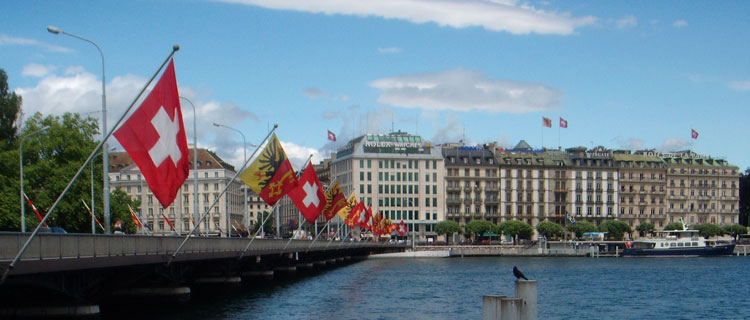
Arriving in Geneva
Our red-eye flight from New York landed at Genève Aéroport under a bright blue early morning sky. The journey from the airport to the city center was quick via taxi, only about twenty minutes.
Though if you are not bogged down by luggage, the train is a great option, (for which one can get a free ticket at the airport), taking only about seven minutes to deposit you into the city.
Best Tips & Tools to Plan Your Trip
The city center is easily a highlight as we discovered on the way to our hotel, the Auteuil Manotel. It would be our base for the next three nights. The central location of the hotel meant that most tourist spots were within easy reach in this eminently walkable city.
First glimpse – the magnificent lake, the amazing architecture, the breathtaking Alpine mountain views, all glittering and shimmering under crystal clear skies; I could not wait to start our sightseeing.
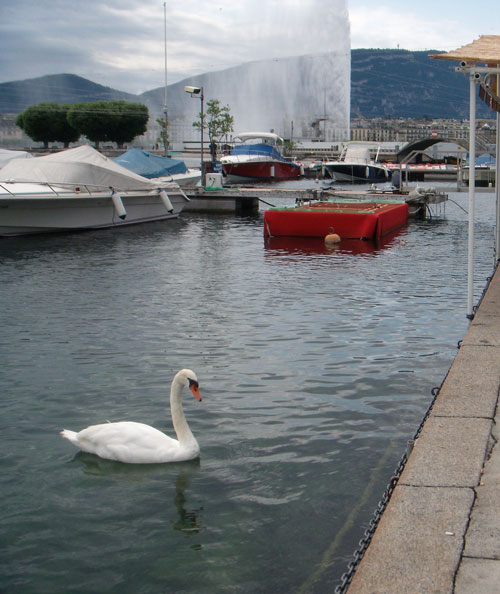
The Lake, Fountain and Bridge
After a quick rest, we stepped out onto Rue de Lausanne, a busy thoroughfare like in any other city but with sleek trams running back and forth. Remember that anyone staying in a hotel, hostel or campground can receive a free public transportation card for the duration of their stay in Geneva for citywide use.
We wanted to venture out to Lac Léman, more famously known as Lake Geneva, forged in a crescent shape from the Rhône River, the city being situated on the lake’s southwest tip. It is the largest Alpine lake and the largest water body of Switzerland with its southern shore hugging France.
In the distance, we could view the snowy peaks of the French and Swiss Alps. We reached the lake promenade and found wondrous scenery around us. Scores of boats and yachts were bobbing in the translucent blue waters, charming and graceful mute swans were swimming by.
We sat upon a bench, soaking in the atmosphere and suddenly I gasped in astonishment. I had noticed the Geneva Water Fountain, the Jet d’ Eau, a fountain like no other and the iconic visual landmark in Geneva.
Built in 1886 to release and control the built up pressure of a hydraulic plant, it soon racked up aesthetic value. In present times, the water reaches up an astonishing height of 460 feet and gets illuminated with lights on fall and spring evenings.
Sitting on a bench in the area surrounding the fountain, you will also see the Mont Blanc Bridge or the Pont du Mont Blanc, another Geneva icon. Spanning the Rhòne River as it separates from Lake Geneva, the bridge connects the left and right banks of the city. The bridge festooned with rows of flags creates a perfect backdrop for photo ops as you walk on its pedestrian paths.
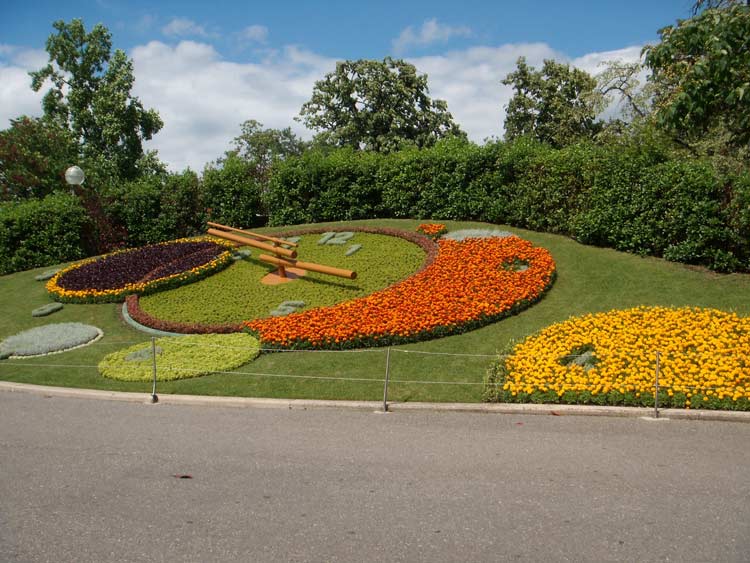
A Walk in the Old Town
Vieille Ville or the Old Town of Geneva with its 2000 year history is an exquisite tangle of cobblestone streets, quaint squares, eclectic museums and a multitude of historic buildings. The oldest historical city in Switzerland is now filled with cafes, restaurants and hotels. To get an excellent overview of the Old Town, you could take a mini train tour which for us turned out to be a cheerful, fun ride.
Saint Pierre Cathedral or St. Peter’s Cathedral as it’s called in English, looms over the Old Town. Though the site had a church since the 4th century, the cathedral was built between 1160-1252 and there were additions and reconstructions until the 18th century.
It is embodied in its architectural styles which range from the Gothic arches to the Neoclassical columns and pediment. Originally a Roman Catholic cathedral, it transformed into a Reformed Protestant church in the 16th century when it became the home church of John Calvin, the Reformation leader and thinker.
Visitors must not miss seeing Calvin’s chair and the Chapel of the Maccabees with its stunningly painted ceilings and the magical stained glass windows.
Only a few minutes walk from the cathedral, in the heart of the Old Town are two other places of interest. The Maison Tavel, a private residence from the 14th century, after a fire destruction and passing through many hands over the centuries, was restored beautifully by the city of Geneva in 1963 and converted into the Museum of Urban History and Daily Life in 1986.
Spend a few moments admiring the turrets and the carved heads on the building facade. If you have time take a tour of the recreated 18th and 19th century apartments, the vaulted 12th century cellars and the many temporary and permanent exhibits.
We took a look at L’ancien arsenal or Old Arsenal, a group of five cannons that defended Geneva in olden times. Built as a granary in the 17th century, it became a storehouse for the military and is now the home of the State Archives. The cannons are displayed against magnificent wall frescoes which depict Geneva’s history.
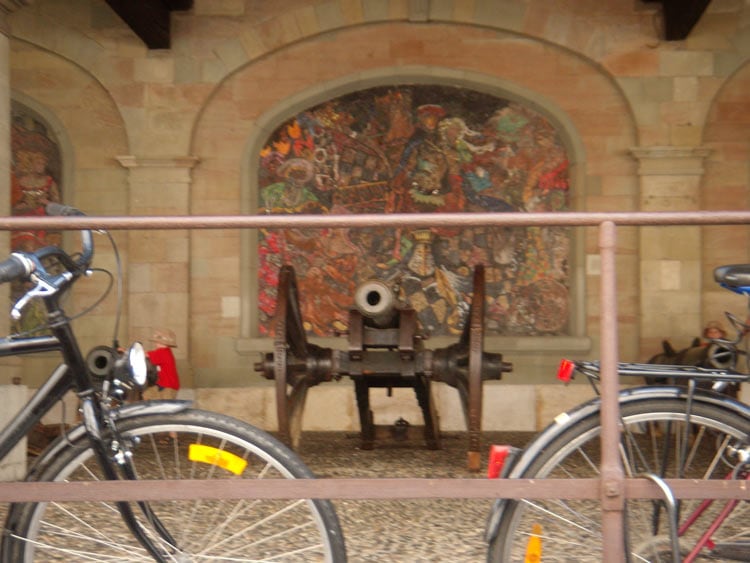
Parks and Monuments
At last to rest our tired legs after a day of sightseeing, we stopped at Bastions Park. As it is noted in the website geneve.ch, Geneva is one of the greenest cities in Europe.
The Parc des Bastions boasts not just lush green spaces but also important monuments, restaurants and Geneva’s first botanical garden. As you enter the park, you will surely catch sight of the giant chess pieces. The Reformation Wall, an important Geneva monument, is located here.
The over 300 feet long white-colored sculpture of statues and reliefs is dedicated to the founders of the Reformationist movement, showing the likenesses of John Calvin, John Knox, Guillaume Farel and Thèodore de Bèze.
Le Jardin Anglaise or the English Garden is where you must go to see the floral masterpiece that defines Geneva. The Flower Clock or L’ Horloge Fleurie was designed in 1955 by the landscape architect Armand Auberson.
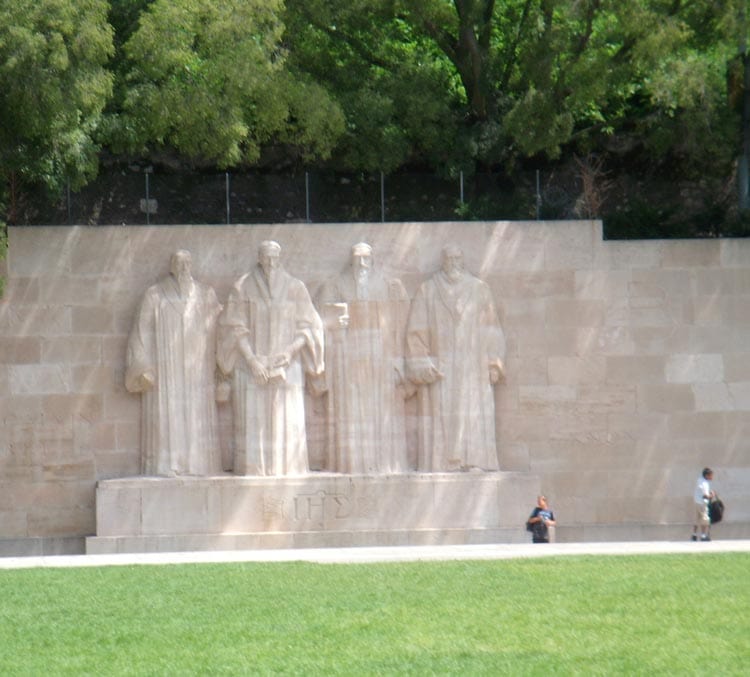
The clock, consisting of thousands of flowers and plants, is a tribute to the brilliance of Geneva watchmaking. The park itself was created in 1855, an urban oasis of meandering paths and hundred year old trees among its many attractions, capped by the splendid Four Seasons fountain.
We stopped for a moment to click a picture of a monumental statue of two bronze attired women looking out towards the lake. Also located in the English Garden, the National Monument, designed by sculptor Robert Dorer in 1869, depicts these two women with their arms around each other representing the unity of Geneva and Helvetia, the personification of Switzerland.
Also of note is the Brunswick Monument, a mausoleum built in 1873 as requested by the Duke of Brunswick, Charles d’Este-Guelph who wanted a majestic funeral and a monument after his death. Today it is a historical building and it’s neo-Gothic style and design replicates the 4th century A.D. Scaligeri family tomb of Verona.
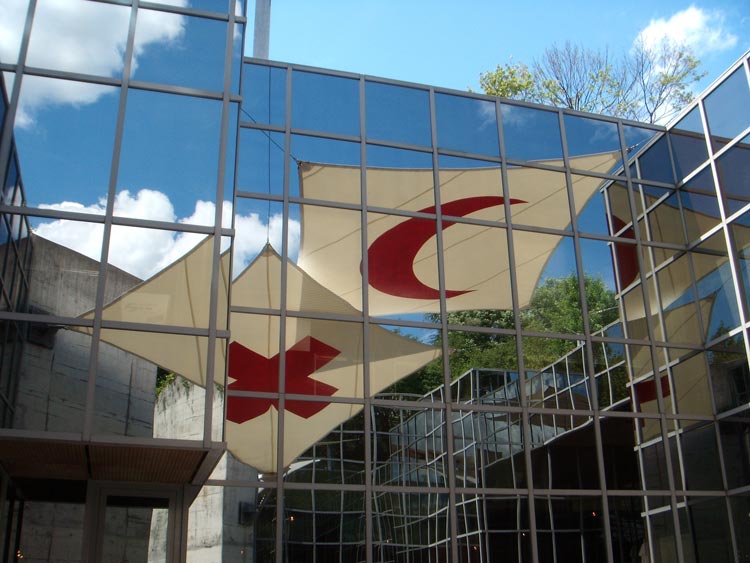
Museum Highlights of Geneva
While there are no dearth of museums in Geneva, some of which you will see when visiting the Old Town or the verdant parks, there are some which require a visit of their own. These are the benchmark museums that are truly unique and distinctive.
The International Red Cross and Red Crescent Museum is dedicated entirely to the history of humanitarian work and also the life and work of the founder of the Red Cross, Henri Dunant, the recipient of the first Nobel Peace Prize in 1901. For me, visiting the museum was an unforgettable experience.
The various exhibits and many interactive displays give a highly emotional, oftentimes personal experience of the work done by this institution at times of wars, conflicts and natural disasters.
Opposite to the Red Cross Museum is the historic Palais des Nations, known to the world as the United Nations. Built in the Art Deco style in the 1930s to house the erstwhile League of Nations, at least a short stop here too is a must.
We did not take a guided tour and instead enjoyed moments walking through Place des Nations. the beautiful open square in front of the UN graced by many choreographed fountains.
The sculpture, Broken Chair, will definitely catch your eye as it towers into the sky. The giant red chair with its broken leg was built as a symbol for nations to sign a treaty to ban landmines.
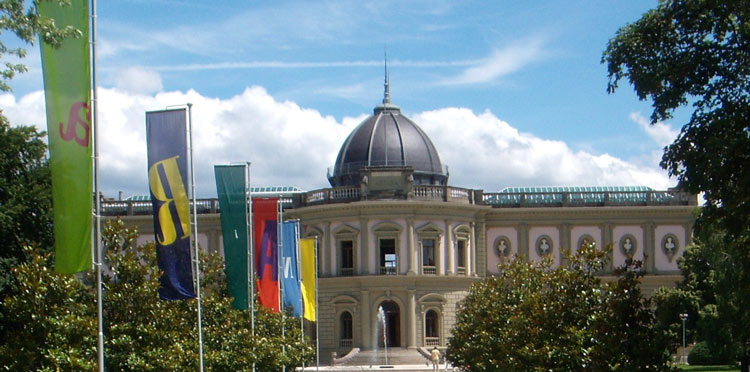
The UN is situated in the gigantic Ariana Park, and right behind it is the Ariana Museum, a magnificent architectural splendor that showcases “arts of fire” objects as mentioned in the museum’s website. The exhibits cover twelve centuries of ceramic and glass art from Switzerland, Europe, the Middle and the Far East.
Beautiful things like Delft earthenware, blue porcelain figurines and objects, Meissen porcelain, stained glass as well as works by modern ceramic and glass artists can all be seen here.
The Patek Philippe Museum is one of its kind, a homage to the watchmaking industry of Switzerland. Spend your time and lose track of it exploring watches and timepieces starting from the 16th century onwards.
You will walk through four floors learning and admiring the history of horology through not just antique and modern watches but also the instruments, tools and workbenches needed to create these masterpieces.
In addition, the bejeweled and enameled jewelry and snuffboxes will take your breath away. One slight drawback – no photography is allowed inside the museum.
Author Bio: Susmita Sengupta, an architect by background from New York City, loves to travel with her family. Her articles are published in many online travel magazines including at Go World Travel.
- The Desert Called: We Answered - May 1, 2023
- Top 10 Travel Quote T-Shirts - November 28, 2022
- Top Things to do in Geneva, Switzerland - August 11, 2022

